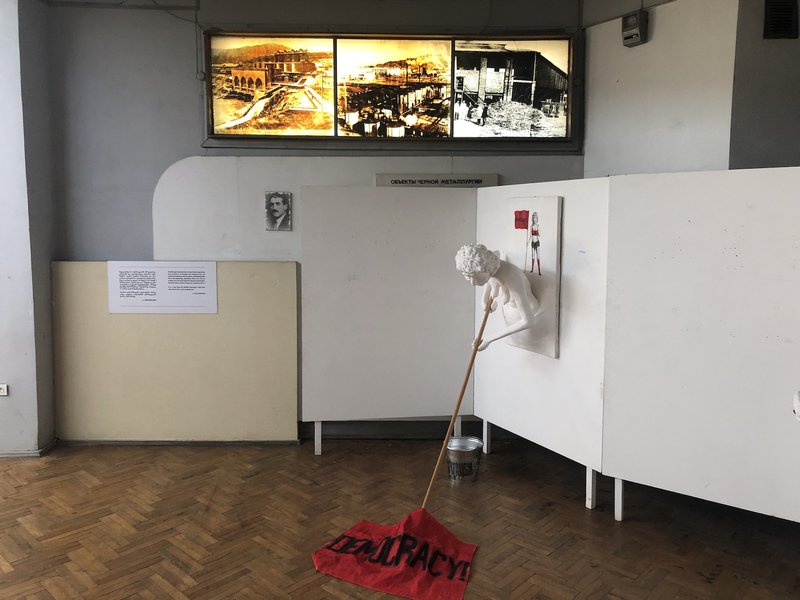Beyond history: How Does Armenia’s Capital City Resolve Its Soviet Past with Its Capitalist Present?
Text Dina Akhmadeeva
In her film My Pink City, Greek-Armenian film director Aikaterini Gegisian examines Yerevan as a place where the past meets the present. What does it look like when Armenia’s politics have changed but the physical remnants of the city’s communist past refuse to be brought into submission?
How are our impressions of urban space constructed? What happens to a place when its monuments outgrow their function of supporting an ideology that is no longer the official line? Can a city ever really break with its past, or does it take on a life of its own that resists and spills out from beyond the confines of its official representations? My Pink City (2014), Greek-Armenian artist Aikaterini Gegisian’s filmic portrait of Yerevan, Armenia’s capital city, combines archival photography and film, location footage, voiceover narration and images filmed from a television screen. It interrogates the city as a nexus of memory and amnesia, the official and the personal, Soviet past and Yerevan’s present, visualising its ability to disorient time and resist the official narrative of a smooth transition from past to present.
While the politics of Armenia have changed, the physical remnants of the city’s communist past refuse to be brought into submission
The city is animated by the movement of a female fruit and nut seller, a voice that proclaims: “Her past is an undigested and indigestible meal, which sits upon her stomach.” Could the protagonist be speaking about Yerevan itself as much as about the woman? Like that indigestible meal, the city’s Soviet past presses onto its present, in the form of now-derelict or disused public spaces and recognisable symbols of communist ideology. Only the washing that blows in the wind or the occasional bored woman leaning on her elbow rupture the rhythmic patterns formed by row after row of windows and balconies of Yerevan’s modernist housing blocks.
In 1920, with the founding of the Armenian Soviet Socialist Republic, Yerevan became the site of rapid urban transformation in accordance with the state’s new ideology. Such high-rise building blocks replaced the bazaars, baths, mosques and churches that had made up the fabric of the city. Much like in other post-Soviet states, these blocks remain the predominant source of housing.
A disused and unkempt open-air Soviet-era theatre, complete with an abandoned mattress, is a place without use in present-day Yerevan, but which nonetheless persists and refuses to disappear from the landscape or the memory of the city. The distinctive modernist circular control tower of Zvartnots Airport’s Terminal 1, built in 1971 as part of the Soviet architectural “rebirth” between the 1970s and 90s, no longer functions as part of the city’s infrastructure, having closed in 2011. The building, now an abandoned and unmaintained Soviet ruin, with cracks quickly forming in the concrete, is technically useless. Nonetheless it remains within the fabric of the city, remaining in place, stubbornly recalling the country’s Soviet past and inadvertently acting as a testament to the impossibility of having full control of the topography of the city from above. While the politics of Armenia have changed, the physical remnants of the city’s communist past refuse to be brought into submission.
Yet how different are these two systems? Pink tufa hammer and sickle carvings appear in various locations around the city, one after another, as the still-visible signs of Yerevan’s Soviet past. Contrast this with Yerevan’s present-day landscape — the garish, luminous signage of casinos and supermarkets. In one shot in Gegisian’s film, a supermarket sign sits on an archway framed by two communist symbols. How different are the mechanics of each system that offer up images for consumption, even in the service of two conflicting ideologies? For Gegisian, this became one of the main threads of the film. She comments that, “the idea of the […] transitional narrative is hardly ever a radical break with the past. Maybe the forms of the ideology have changed but the way power is articulated is more or less the same. In the film I wanted to point to such complexities especially through destabilising the idea of the transition and the break with the past.”


